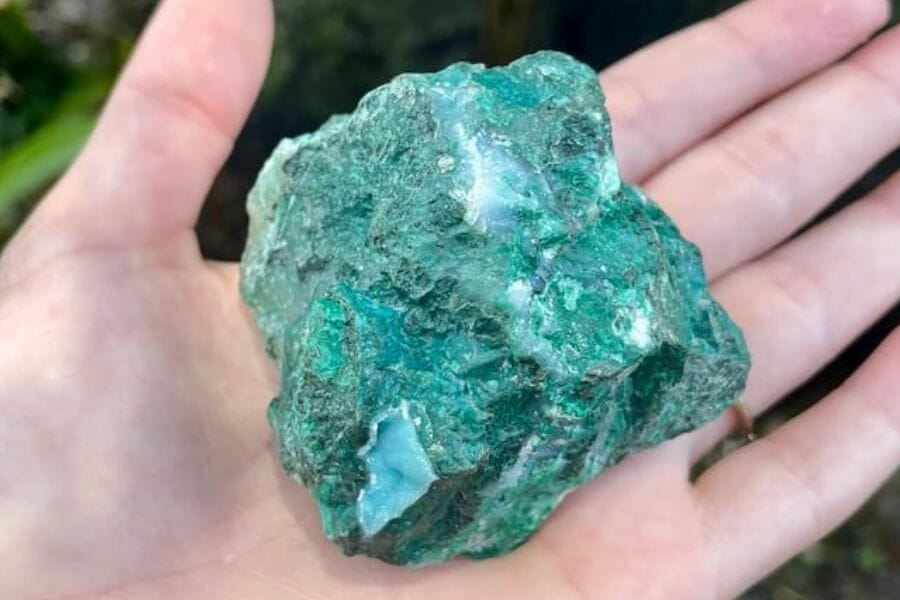Finding crystals can be a rewarding adventure, offering a unique way to explore the natural beauty and geology of the region. Whether you’re a seasoned rockhound or just getting started, knowing where to look is key to uncovering these hidden treasures.
In this state, a variety of locations provide opportunities to discover different types of crystals. From rocky outcrops in the mountains to stream beds that carry sparkling surprises, each area offers its own unique finds for those willing to search.
We can help you get started with some places you can explore for crystals below!
Crystals you can find in the US
The United States offers a wide range of crystals that reflect its diverse geology. From vibrant gems to more subtle mineral formations, there’s something to discover in nearly every region.
Calcite
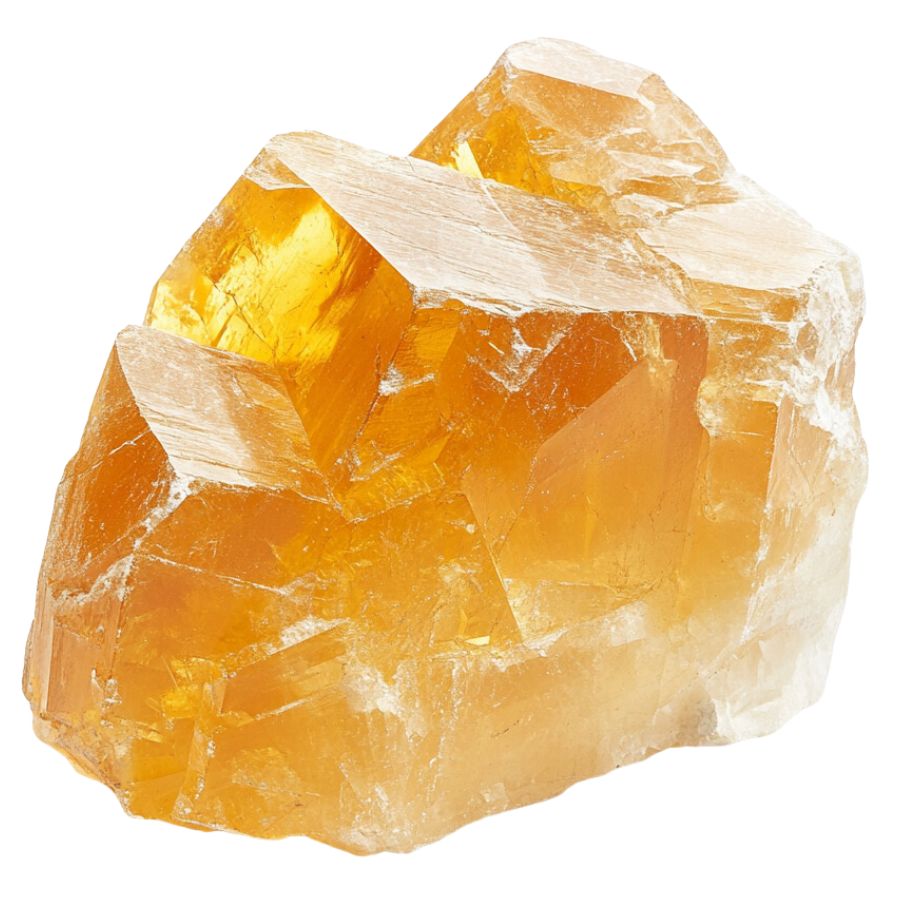
With a variety of forms and a unique property of double refraction, calcite allows objects viewed through the crystal to appear doubled. This mineral can appear in a spectrum of colors, with pure forms typically being transparent or white.
In addition, calcite reacts vigorously with acids, which aids in distinguishing it from other minerals. It also frequently contributes to the structure of sedimentary rocks such as limestone.
Gypsum
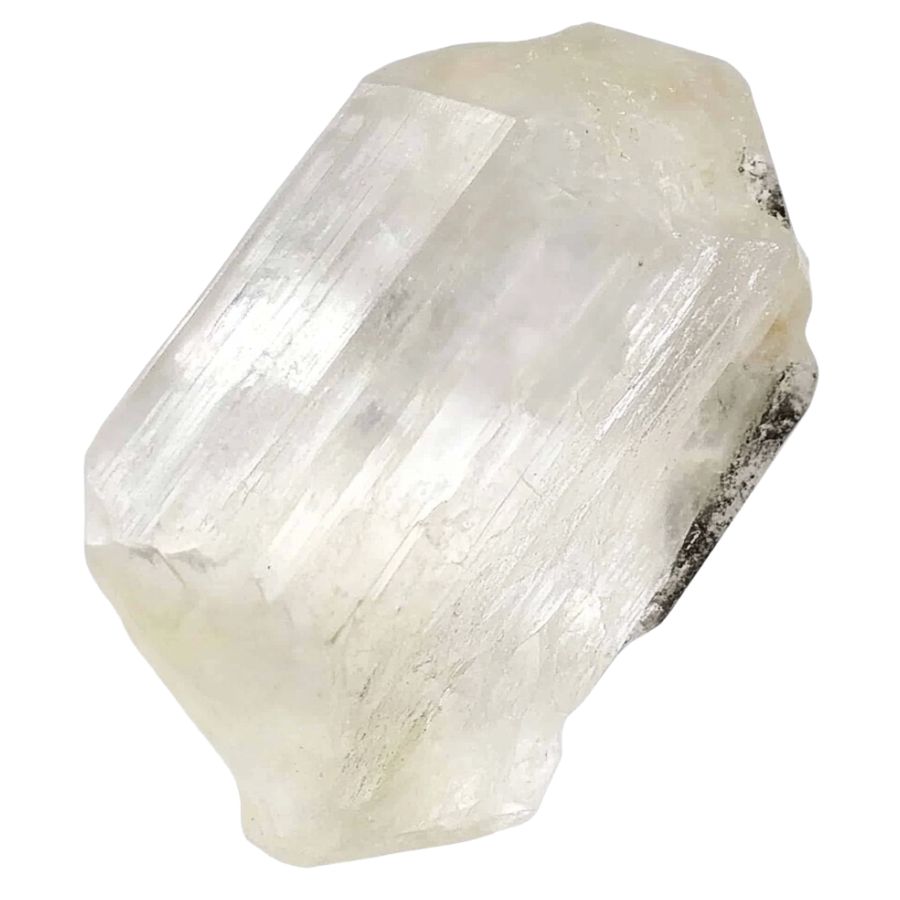
Gypsum’s notable softness allows it to be easily scratched with just a fingernail, often presenting as white or very light-colored in its pure form.
It manifests in both crystalline forms, like selenite, and massive forms such as alabaster, making it versatile in use and appearance.
Gypsum is also essential in the construction industry and is a key component in the manufacture of plaster and drywall.
Fluorite
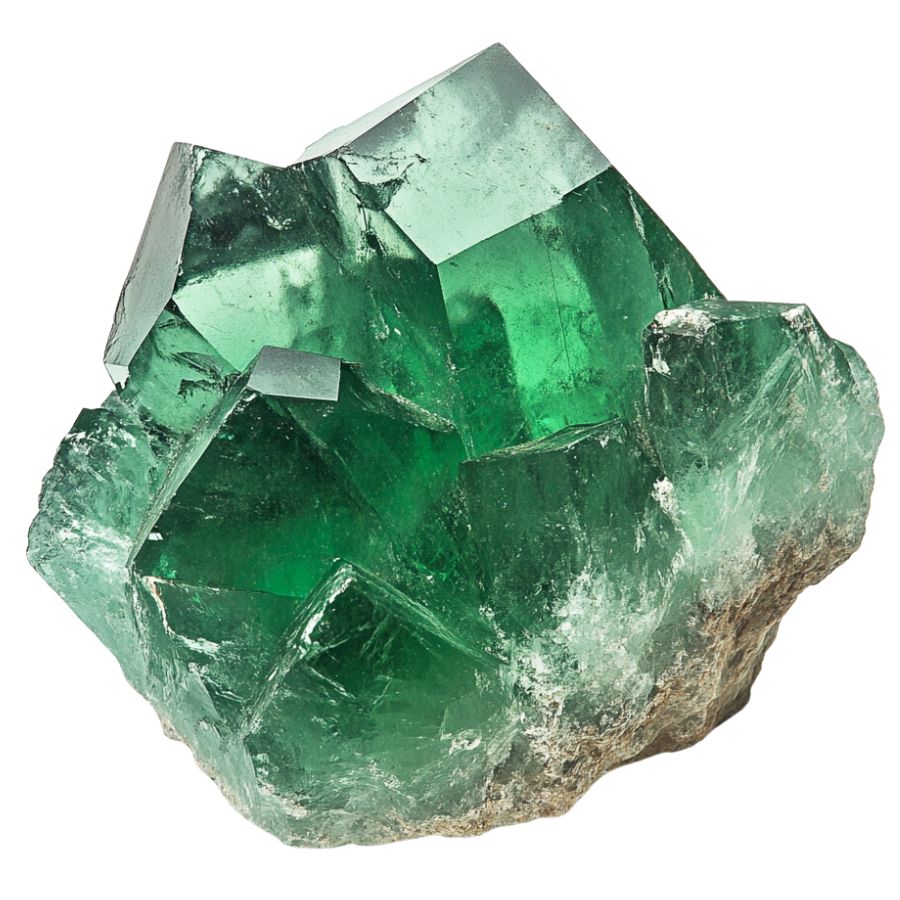
Fluorite comes in a wide range of vibrant colors, including purples, greens, blues, and yellows, and is known for forming in well-defined cubic crystals.
Beyond this, fluorite exhibits fluorescence under ultraviolet light! It can also be used in various industrial applications, including as a flux in steelmaking.
Galena
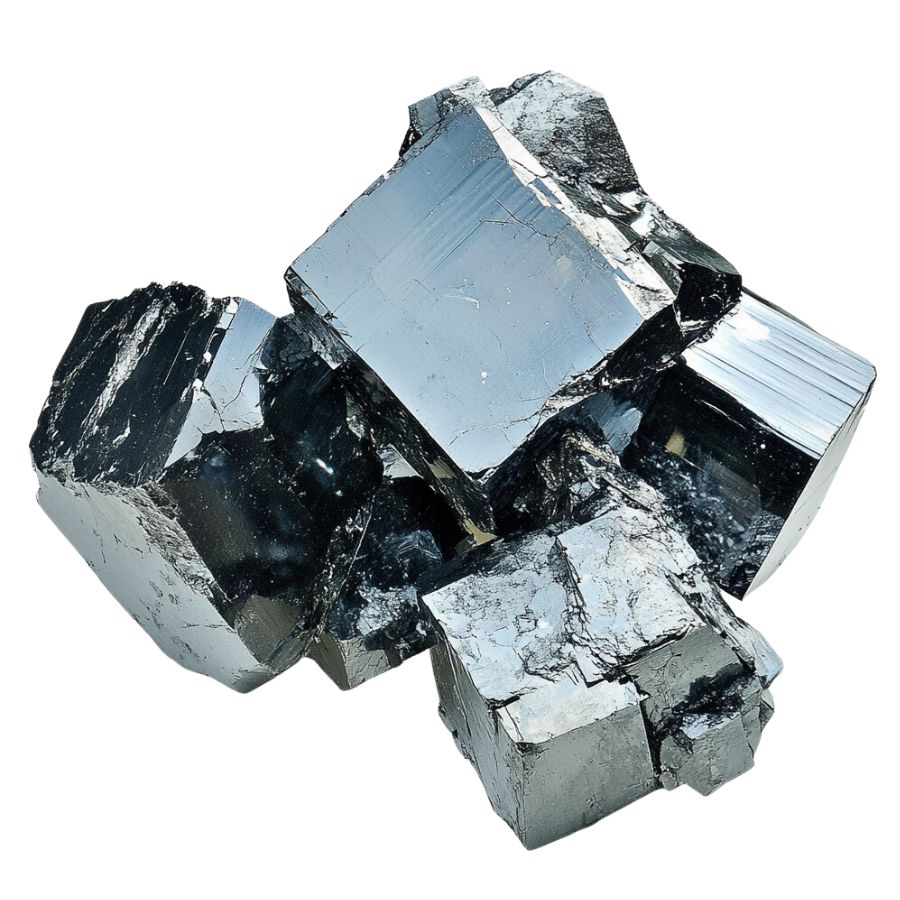
Galena distinguishes itself with a metallic luster and high density, typically found in a cube-like form. It serves as the primary ore of lead, making it important in the metal industry, while its shiny, silver color attracts collectors.
Not only does its appearance make it a subject of interest, but its weight and texture provide tangible lessons in mineral density and metallic properties. Galena also often contains traces of silver, adding to its commercial and educational value.
Corundum
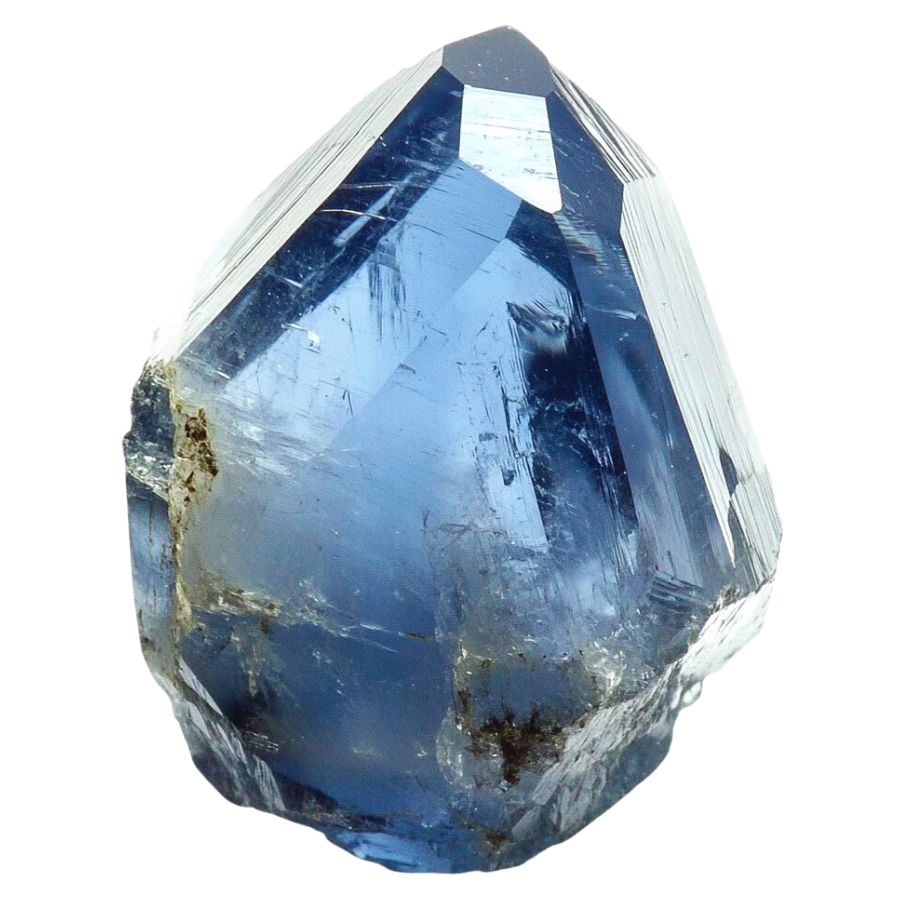
Corundum is a mineral that comes in a variety of colors, though it is typically transparent or gray. Its most famous forms are sapphires and rubies, which are prized for their vibrant blue and red hues.
The mineral is known for its remarkable hardness, ranking just below diamond on the Mohs scale. This durability makes corundum ideal for industrial abrasives and cutting tools, as well as a popular choice for fine jewelry.
Quartz
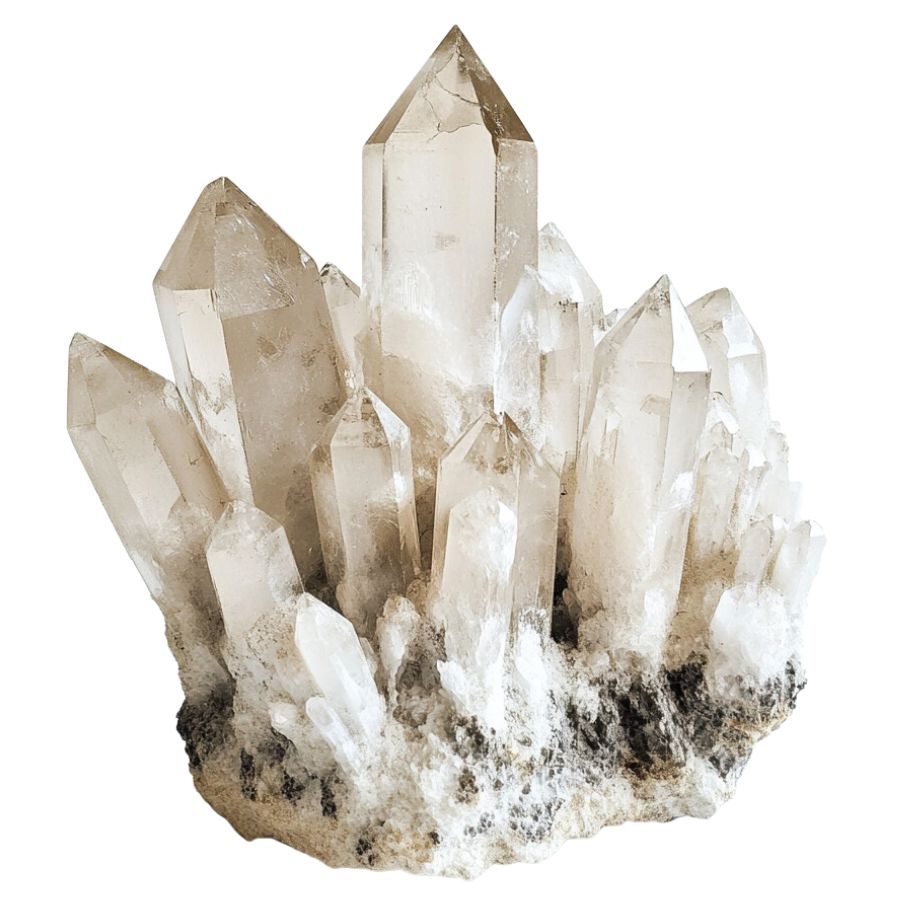
Quartz is among the most common minerals in the Earth’s crust and is prized for its durability and variety. It forms in a wide range of colors and types, from clear rock crystal to purple amethyst.
The mineral is notable for its hardness and durability, which contribute to its use in a variety of applications. Quartz is also popular in the manufacturing of electronics and watches due to its piezoelectric properties, which allow it to convert mechanical pressure into electrical energy.
Pyrite
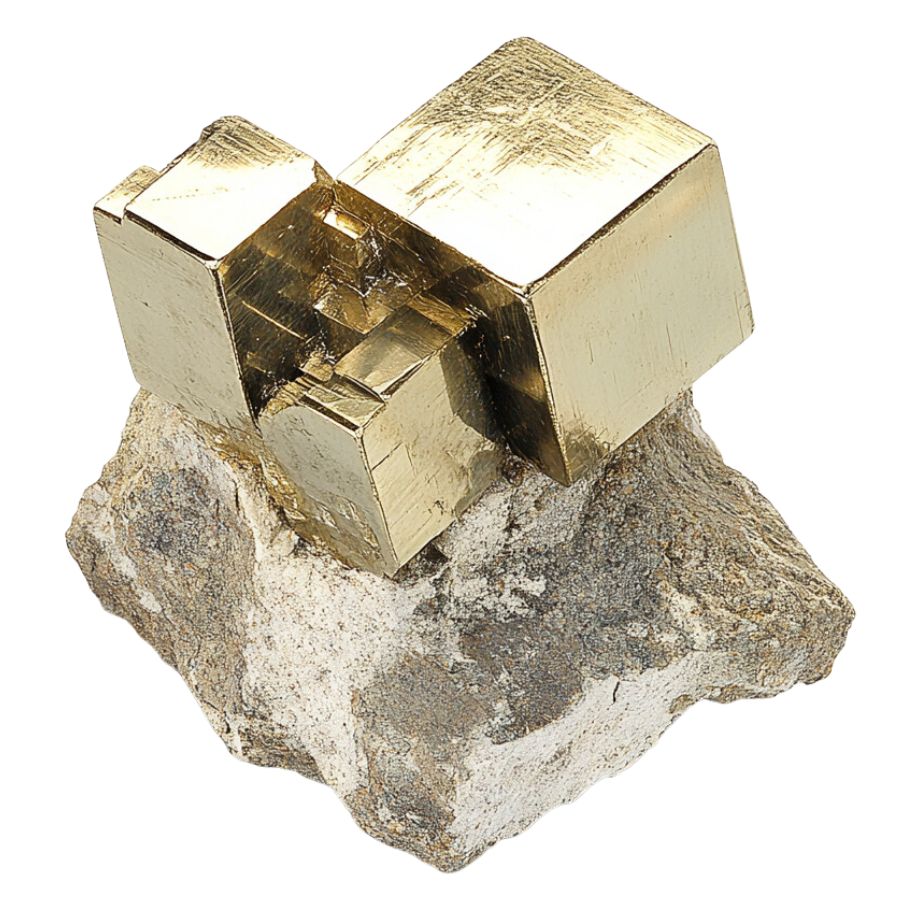
Often mistaken for gold due to its metallic luster and pale brass-yellow hue, pyrite is known colloquially as “fool’s gold.” Its characteristic cube-shaped crystal formations look man-made but are actually completely naturally formed!
Pyrite also has historical importance in producing sulfur dioxide for sulfuric acid production.
Rhodochrosite
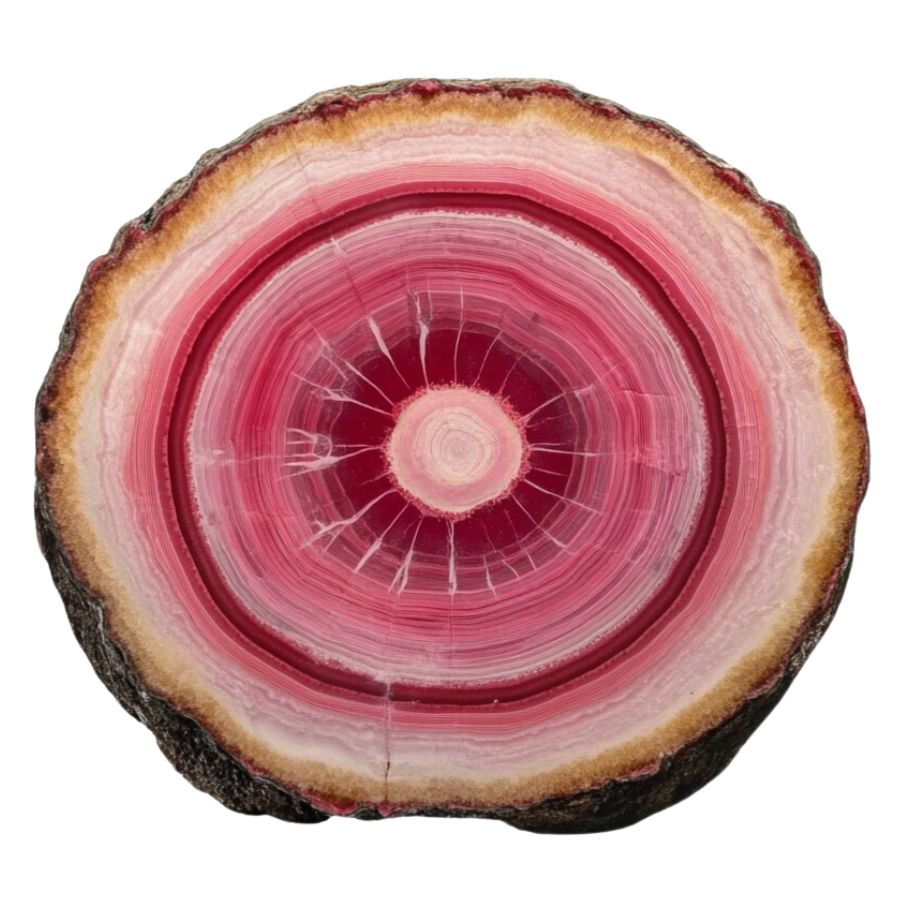
Rhodochrosite stands out with its rich pink and red hues, making it highly desirable as both a mineral specimen and a gemstone.
It typically forms in layered or stalactitic structures, with bands of colors that showcase how it grew over millions of years.
Beyond its beauty, rhodochrosite is significant as the main source of manganese, an essential element used in metal alloys.
Rhodonite
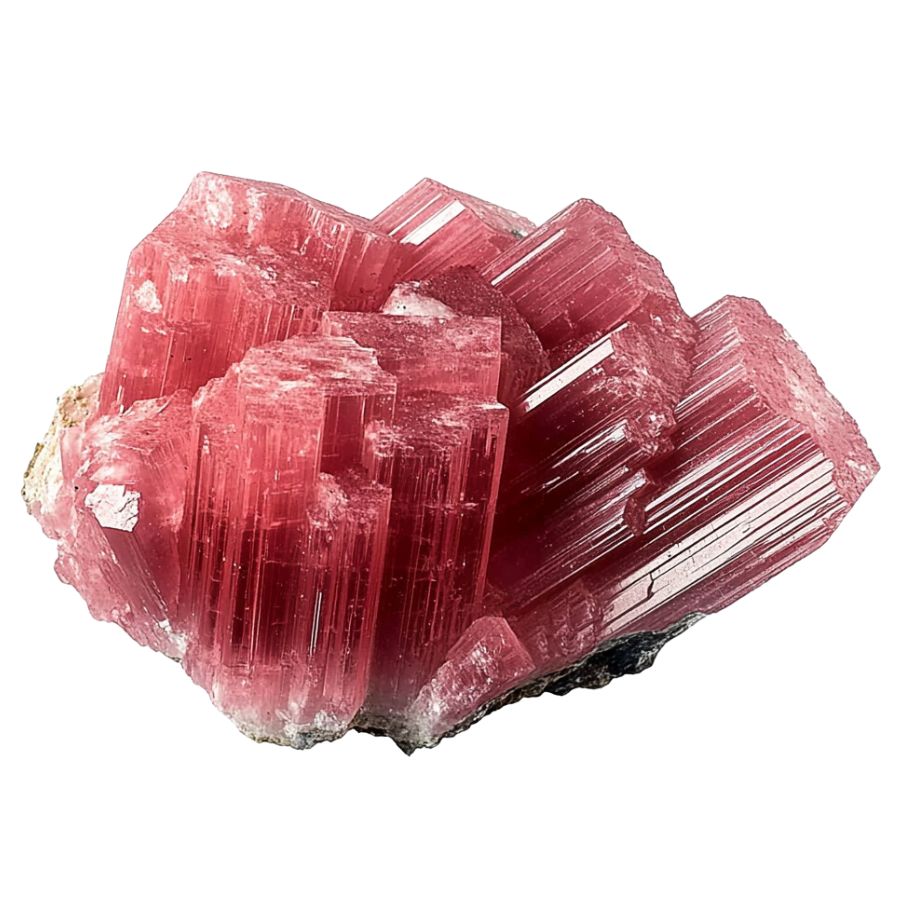
Appreciated for its deep pinks and reds, often complemented by black manganese oxide veins, rhodonite presents a dramatic appearance. It is typically found in metamorphic rocks and is used both as an ornamental stone and in jewelry.
In geology, rhodonite is significant for its role in metamorphic processes and its association with other manganese-rich minerals. It can be found in metamorphosed sedimentary rocks and is sometimes used as an indicator of the presence of manganese deposits.
Vivianite
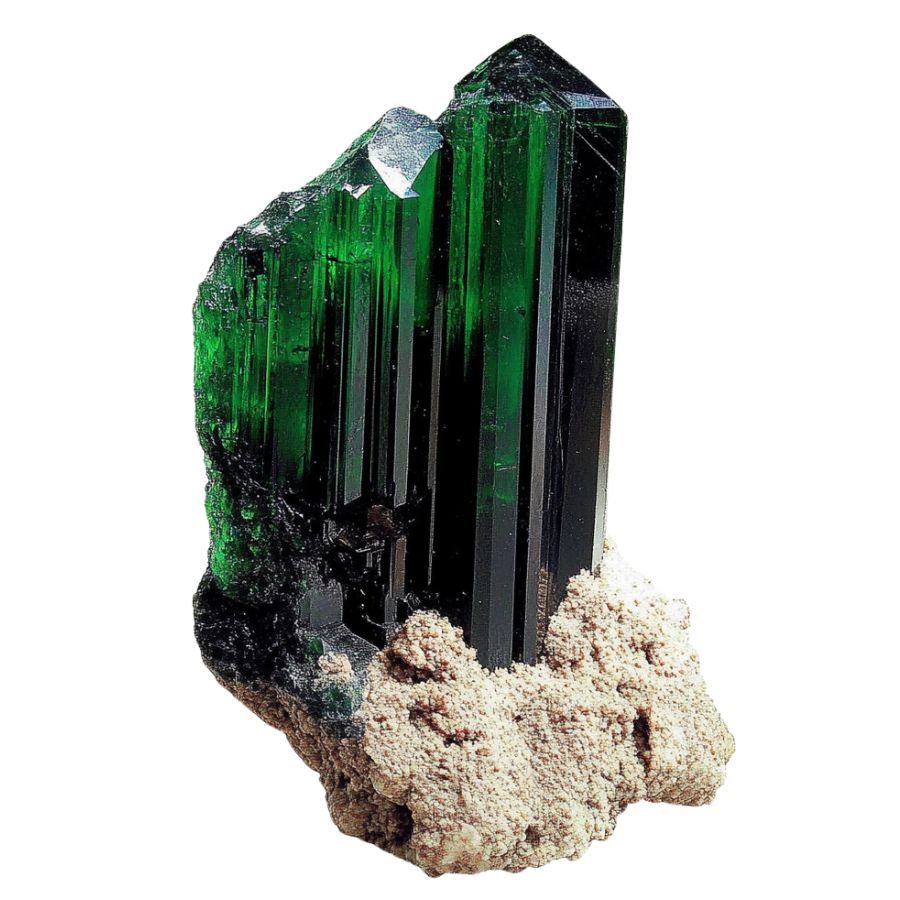
Vivianite, an iron phosphate mineral, emerges in low-oxygen environments like peat bogs or iron-rich deposits. Its striking blue to green color, which can change to a lighter shade over time due to oxidation, makes it a distinctive mineral.
Found in various geological settings, vivianite provides clues about the local conditions and the presence of phosphate deposits.
The Types of Oregon Crystals You Can Find
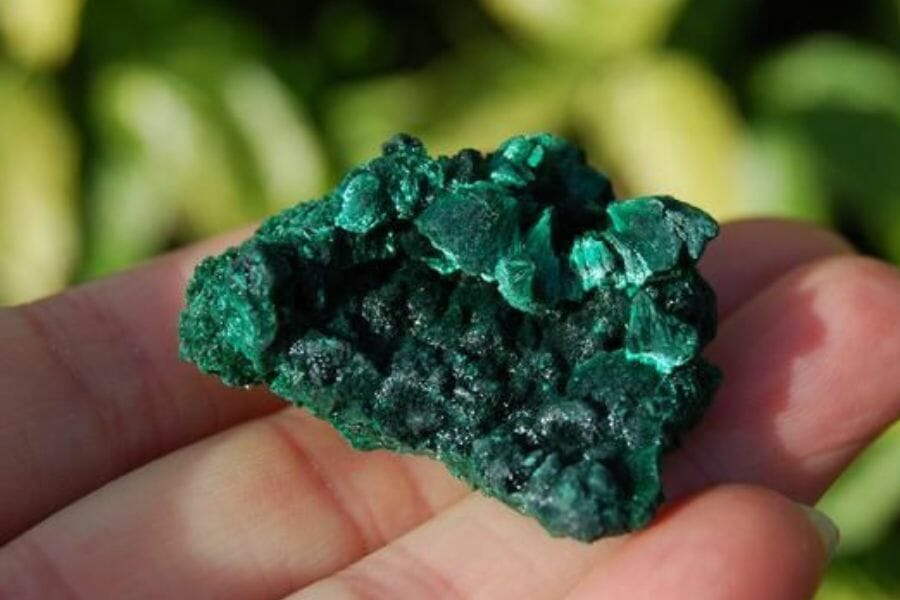
Although having fewer crystal resources than other states, Oregon is home to several stunning crystal formations. If you want to look around, there are a ton of crystals available in different locations, and here are some of them:
Rare crystals found in Oregon
- Azurite
- Chalcopyrite
- Chrysocolla
- Chrysoprase
- Galena
- Jade
- Opal
- Rhodonite
- Serpentine
- Sunstone
More common crystals found here
- Agate
- Bloodstone
- Carnelian
- Calcite
- Chalcedony
- Garnet
- Jasper
- Malachite
- Moonstone
- Pyrite
- Quartz
What rough crystals look like
When you’re out looking for crystals on your own it’s important to know what you’re looking for. This is what you need to look out for:
Look for exteriors like this
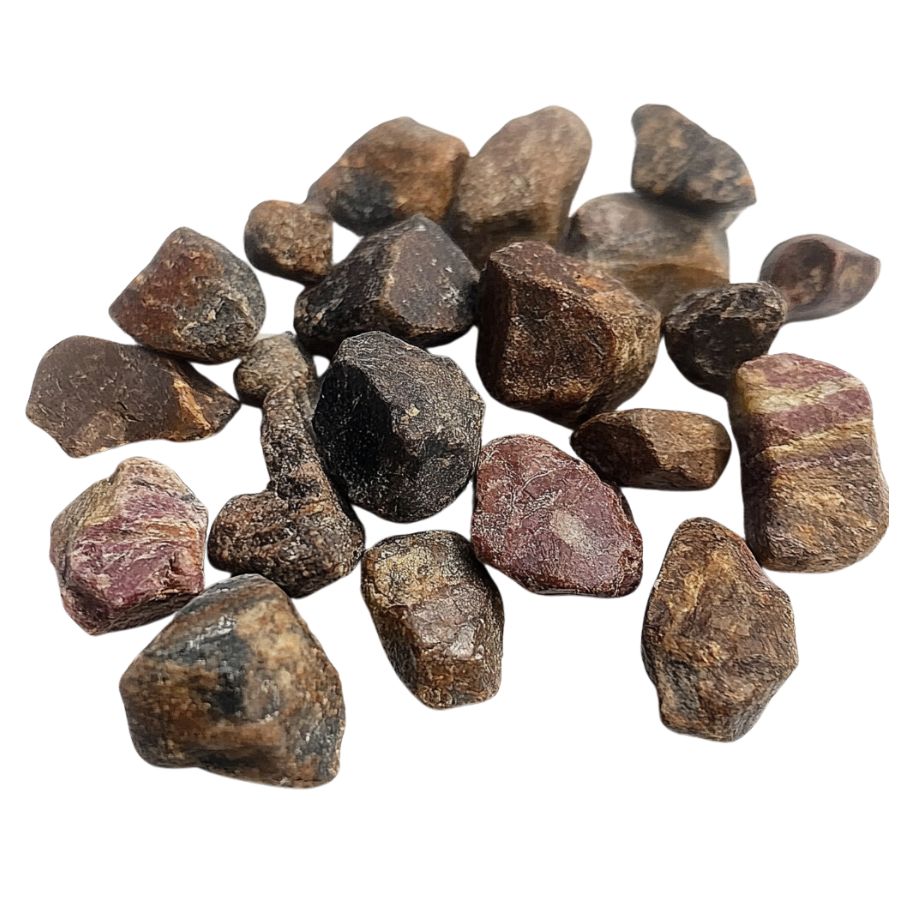
When you’re out searching for crystals in the wild, it’s essential to keep in mind that what you find won’t look like the polished stones you see in stores. One important tip is to consider what certain crystals look like in their raw, natural form.
Without the shine and smooth finish, crystals might appear rough, with jagged edges or earthy tones masking their true beauty. Understanding this can help you spot potential finds that might otherwise be overlooked.
Examine the crystal structure and shape
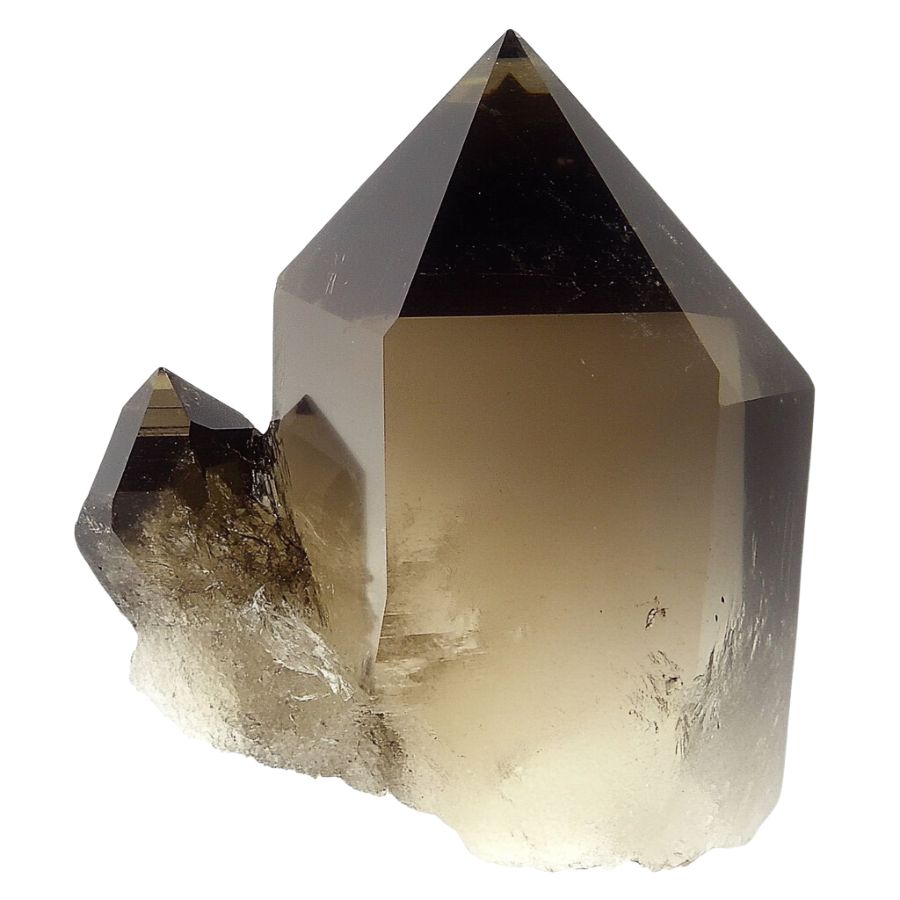
Crystals often form in specific geometric patterns that can be key to identifying them. For example, quartz is known for its hexagonal prisms, while halite typically forms cubic shapes.
By recognizing these distinct patterns, you can differentiate between various types of crystals and better understand what you’ve found.
Observe color
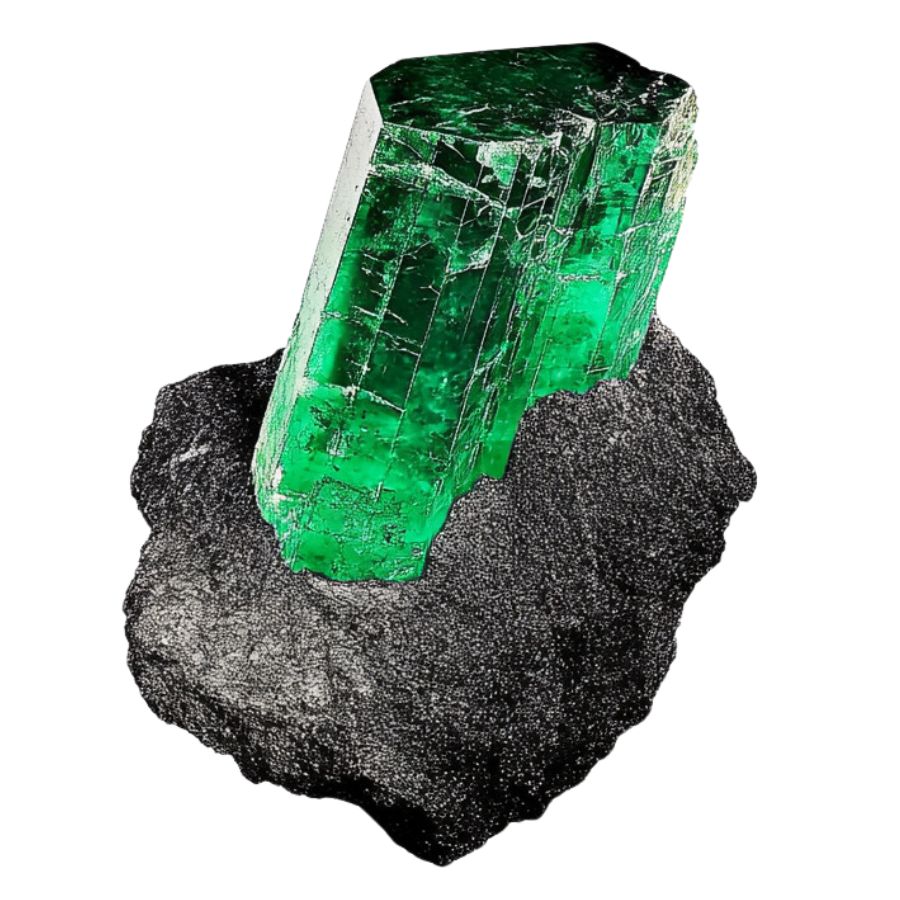
Some crystals are known for their distinct hues, like the deep purple of amethyst or the vibrant green of emerald. However, not all crystals will have strong colors; some may be clear or only slightly tinted.
Check the luster
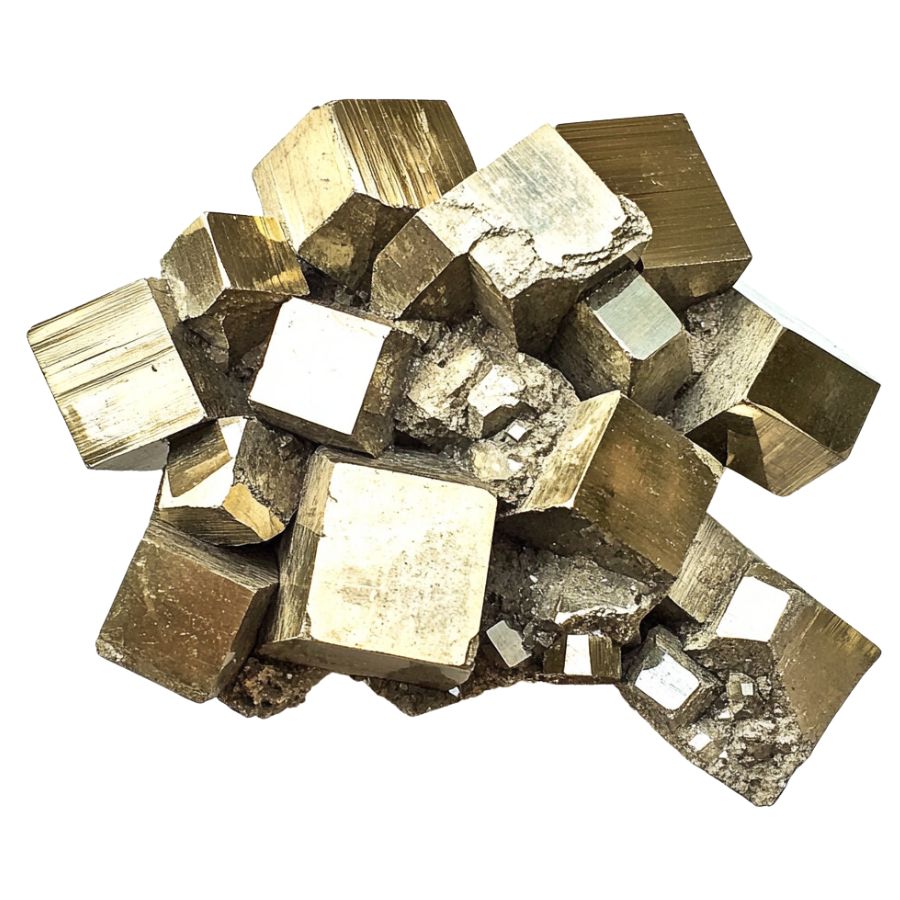
Luster refers to how a crystal’s surface interacts with light. Some crystals might have a shiny, glassy luster, while others may appear metallic or dull. This characteristic can help you determine the type of crystal you’ve found.
However, it’s important to remember that luster isn’t always obvious right away. In some cases, a crystal’s true luster will only become apparent after it’s been cleaned or polished, so keep this in mind as you examine your finds.
Evaluate the transparency
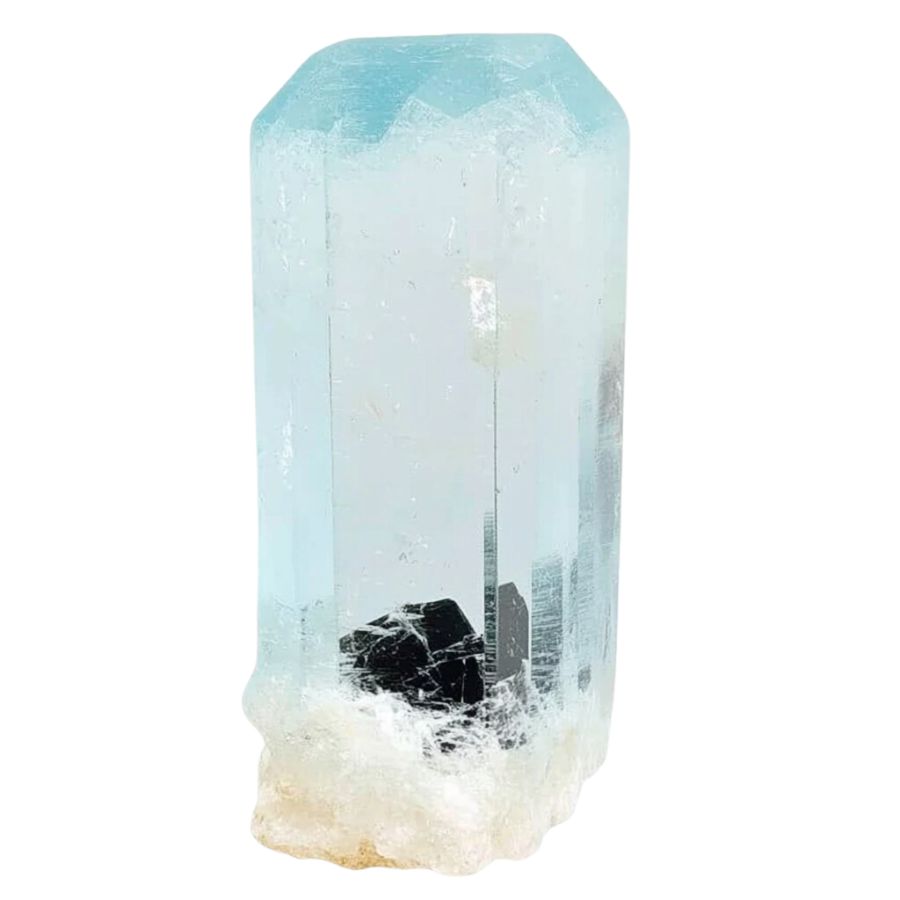
Pay close attention to how much light passes through the crystal. Some crystals are completely clear, allowing light to pass through easily, while others may be opaque and block light entirely.
You might also encounter crystals with translucent edges but opaque centers. These variations in transparency can offer valuable clues about the type of crystal you’ve found, making it easier to identify and appreciate your discovery.
A Quick Request About Collecting
Always Confirm Access and Collection Rules!
Before heading out to any of the locations on our list you need to confirm access requirements and collection rules for both public and private locations directly with the location. We haven’t personally verified every location and the access requirements and collection rules often change without notice.
Many of the locations we mention will not allow collecting but are still great places for those who love to find beautiful rocks and minerals in the wild without keeping them. We also can’t guarantee you will find anything in these locations since they are constantly changing.
Always get updated information directly from the source ahead of time to ensure responsible rockhounding. If you want even more current options it’s always a good idea to contact local rock and mineral clubs and groups
Tips on where to look
Having a better idea of where to look can greatly narrow down your search and increase your chances of finding crystals. By focusing on environments where crystals are likely to be exposed, you can spend less time searching and more time discovering.
Outcrops and Exposed Rock
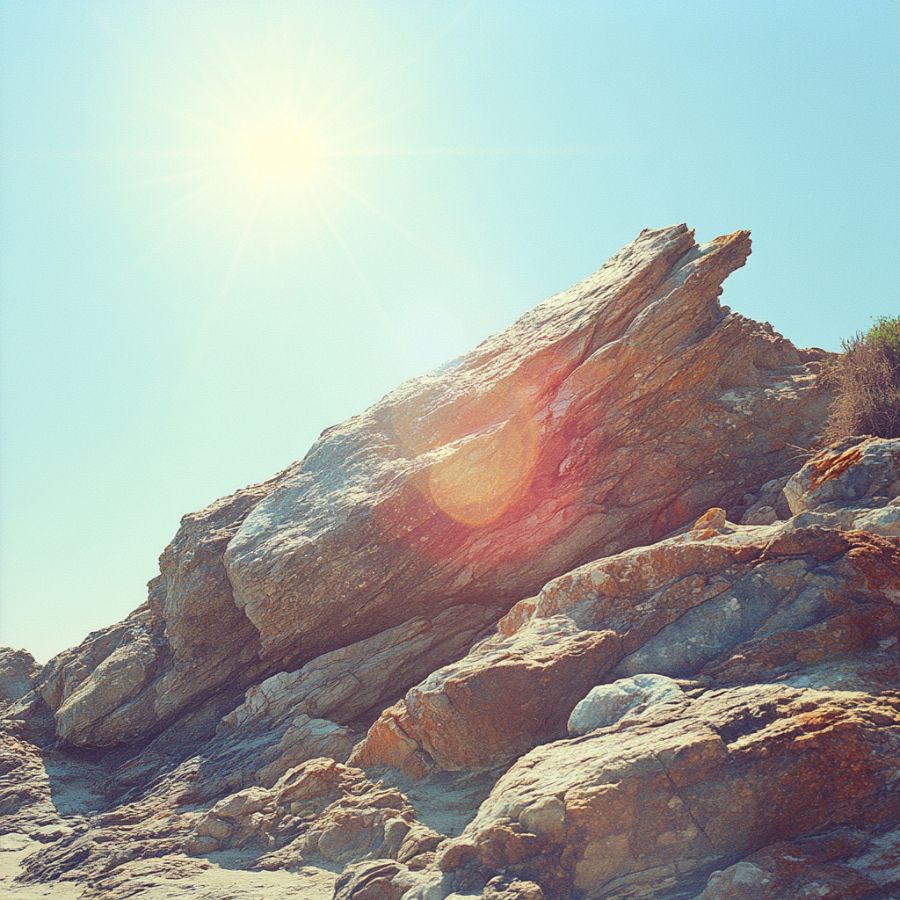
Rocky outcrops are prime locations for finding crystals and minerals. Search along the edges of outcrops, particularly where erosion has worn away the surrounding soil, revealing the rock underneath.
Pay close attention to any visible cracks, crevices, or small cavities within the outcrop, as these are often where crystals develop and can be extracted with minimal effort.
Stream Beds and Gravel Deposits
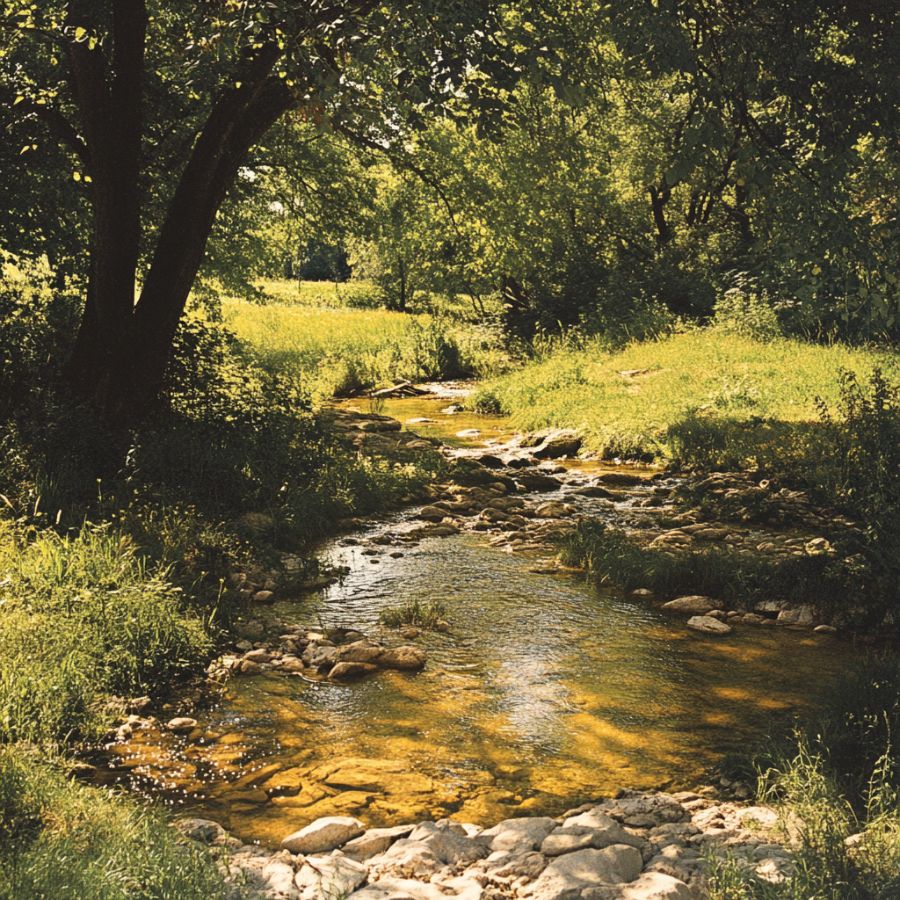
Stream beds are dynamic environments where water flow constantly shapes the landscape. Over time, water can erode rocks upstream, breaking them down and carrying mineral fragments, including crystals, downstream.
When searching in these areas, look for spots where the current has slowed, such as bends in the stream or areas behind large rocks, as these are prime locations for deposits.
Quarries and Mines
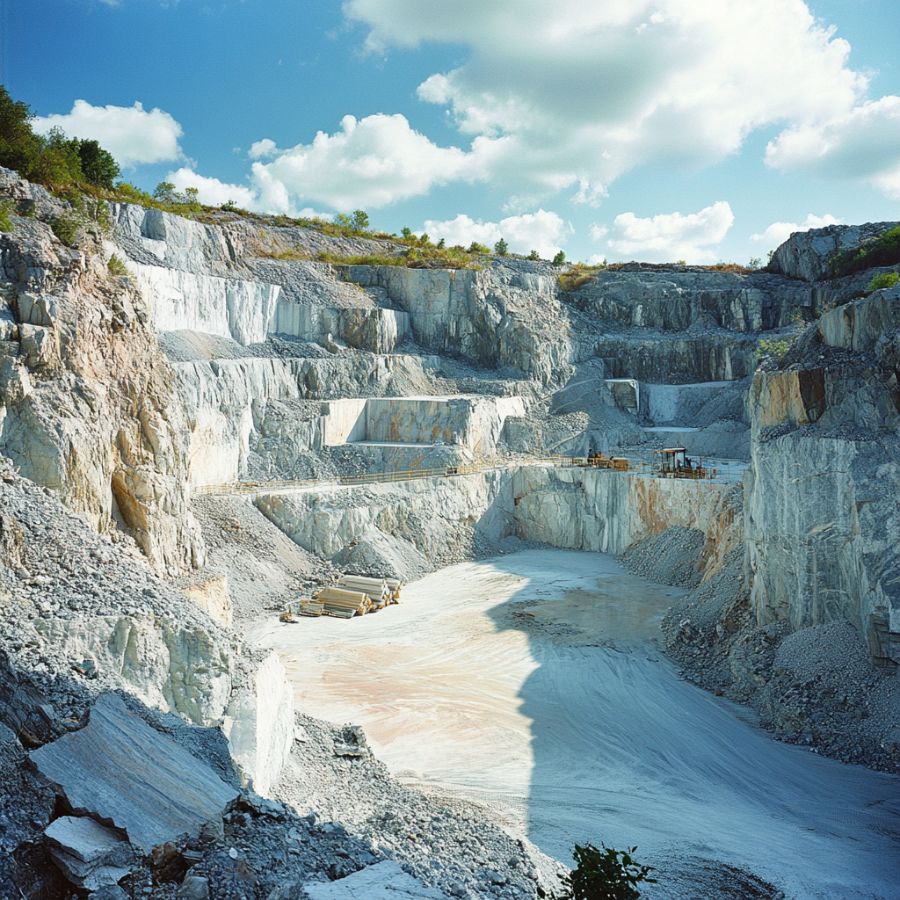
Quarries and mines are excellent places to search for crystals because they expose deep layers of rock that would otherwise be hidden beneath the surface. These sites often contain a variety of minerals and crystals that have been brought to the surface during excavation.
Pay attention to tailings piles, where waste rock is discarded, as they often contain overlooked or broken crystals. Always prioritize safety when exploring these areas and ensure that you have permission to search.
Road Cuts and Construction Sites
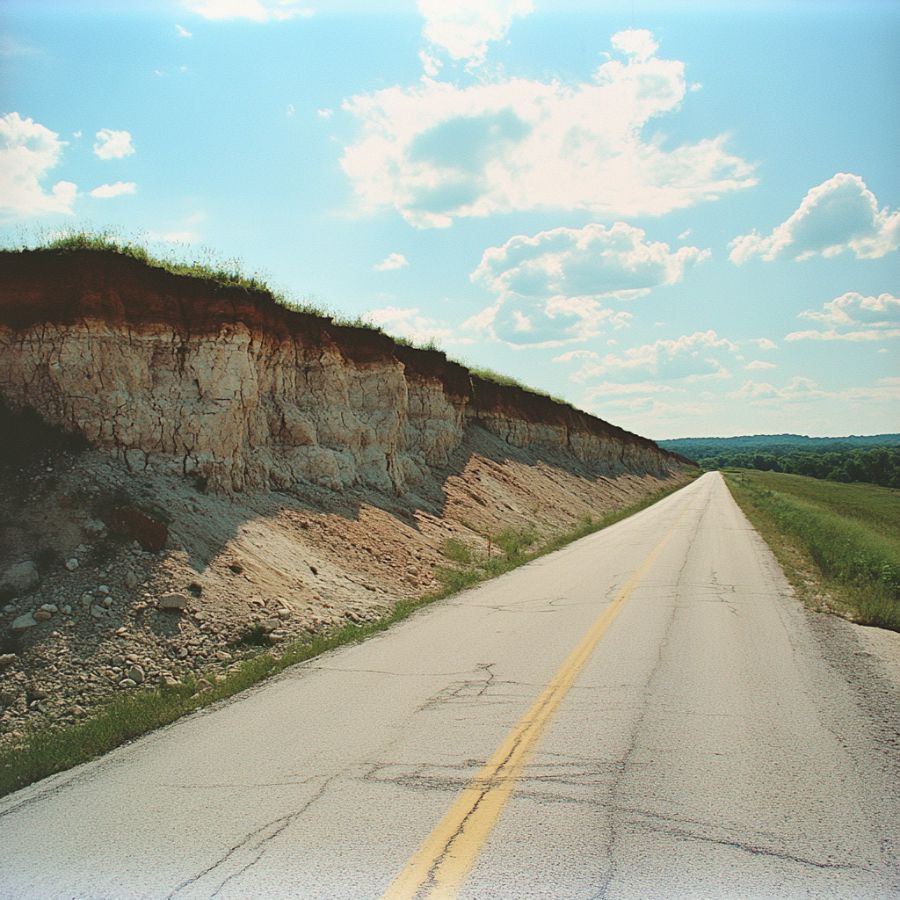
As roads are cut through hillsides or construction projects dig deep foundations, layers of rock and soil that have been undisturbed for millions of years are suddenly exposed.
Look for freshly exposed rock faces, especially where blasting has occurred, as this can create fissures or expose pockets filled with crystals. Be cautious around active construction sites, and always seek permission before exploring.
Mountainous Areas
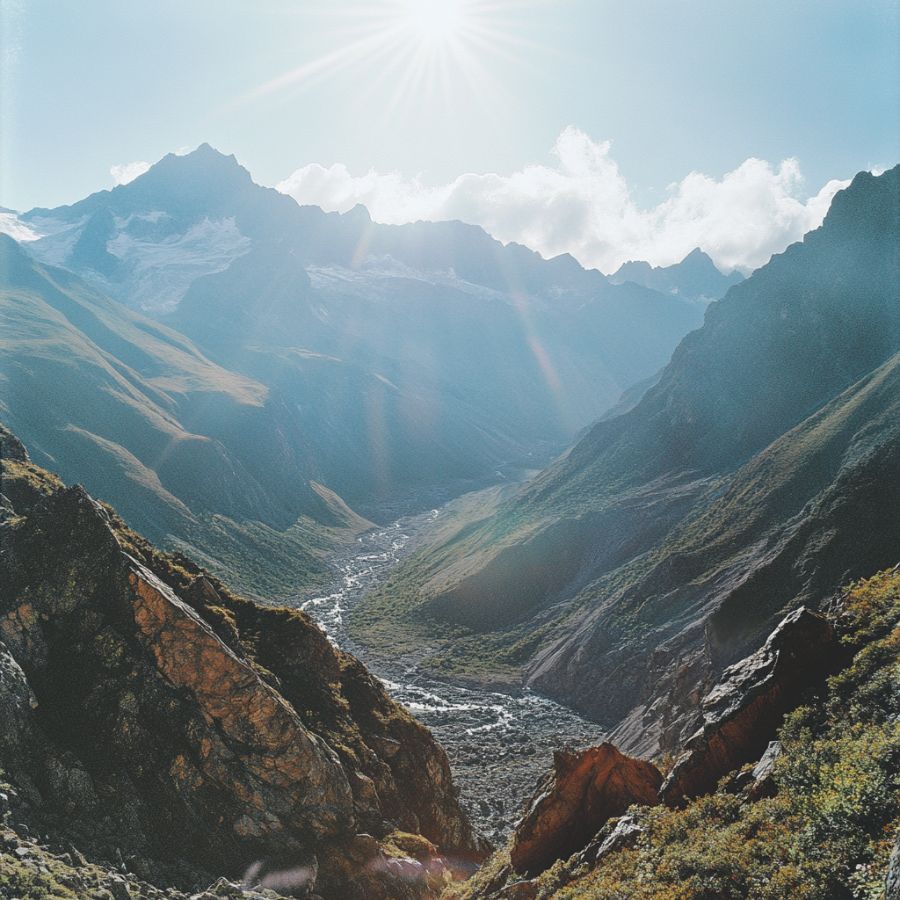
In mountainous regions, erosion caused by wind, rain, and ice can wear away the softer rock, exposing harder crystals that have formed within. Focus on weathered and broken rock formations.
Look for scree slopes, where loose rock has accumulated at the base of cliffs. Additionally, areas near fault lines or volcanic vents are particularly promising, as they often have a higher concentration of minerals.
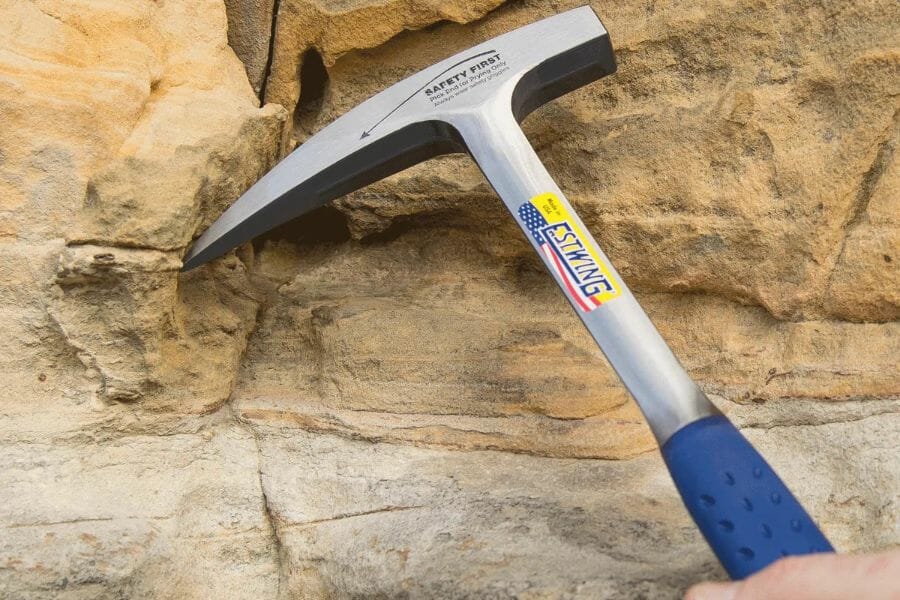
The tools every crystal hunter will need
When you're out looking for crystals having the right tools for the job is very important. You don't need a lot for most trips but there are a handful that are critical and will make your life a lot easier.
We get asked a lot about the equipment we use. Over the years we've found a handful of tools that we recommend to both new and experienced crystal miners which we outline in great detail in our complete rockhounding equipment guide. These are quality options that also happen to be relatively inexpensive.
Below are the basic tools that make your life so much easier and save you a ton of time. Check out the full guide to see everything we recommend bringing. One quick note, as an Amazon Associate I earn from qualifying purchases but we try very hard to only recommend gear we would use ourselves and often recommend brands you can't find on Amazon.
At a minimum you should have:
1 - Sturdy rock hammer: The Estwing Rock Pick is our standard
2 - Rugged chisels: Try Kendo' 3-piece Chisel Set
3 - Compact shovel: The Koleiya 28-inch shovel works well
4 - Rock screen pan: The Wazakura Soil Sieve Set fits the bill
5 - Eye protection: DeWalt Safety Glasses are cheap and comfortable
6 - Head protection: Malta's Safety Helmet has been our go-to
7 - Jewelers lens with at least 20x magnification: Jarlink's Jewelers Loop is perfect
The crystal-finding books that we use most
There are also a few books that have been extremely helpful in the search for gems. These books have great recommendations and tips:
National Audubon Society Field Guide to Rocks and Minerals: North America
Southeast Treasure Hunter's Gem & Mineral Guide
Earth Treasures: The Southeastern Quadrant
We provide links to find these tools on Amazon but some can also be found at your local hardware stores. For more recommendations check out the link to our full tool guide above.
Oregon Crystal Mining Laws And Regulations
While Oregon offers a wealth of crystal hunting opportunities for enthusiasts, it is crucial to be aware of and adhere to the state’s recreational crystal hunting regulations to ensure a responsible and enjoyable experience.
Many public lands in Oregon, such as the Oregon Bureau of Land Management (BLM), allow recreational crystal hunting. However, you must familiarize yourself with each area’s specific rules before collecting.
Some locations may have restrictions or permit requirements, so always verify with the managing agency. Always obtain permission from the landowner before entering private property to search for crystals. Trespassing without consent is illegal and can result in severe consequences.
Collecting rocks, minerals, or other geological specimens is generally prohibited within National Parks and Monuments. Always consult with park authorities to learn about any specific rules and restrictions.
- The extensive local experience and understanding of our team
- Input from multiple local crystal hunters and crystal collecting groups
- The accessibility of the crystal mining locations
- Safety and potential hazards when collecting
- Private and public locations
- A desire to include locations for both experienced crystal hunters and those who are just starting out
Using these weights we think we’ve put together the best list out there for those who love finding new crystals for our collections!
The Best Locations For Crystal Mining in Oregon
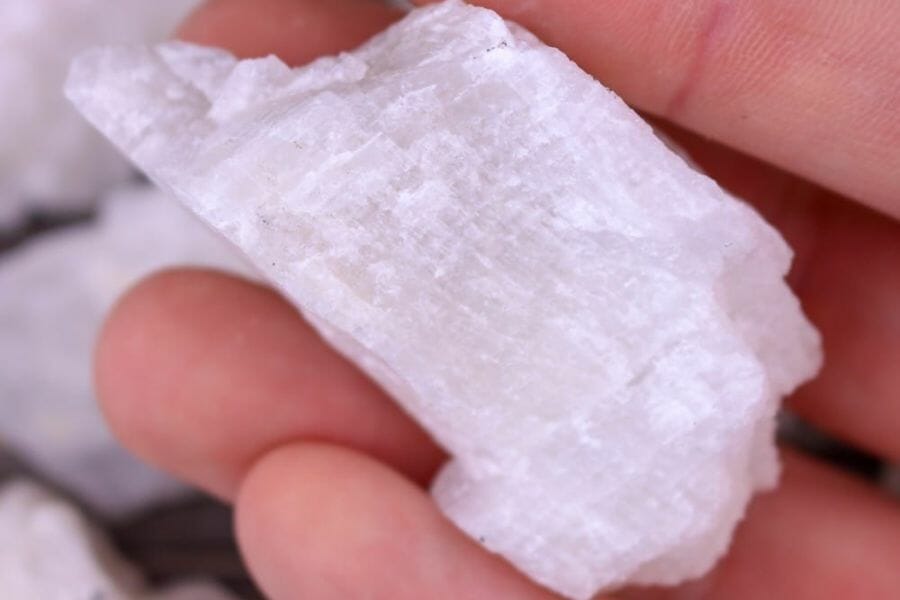
Here are some of the greatest places to look for crystals in Oregon. We’ve had the best success exploring them and finding rare crystals, and we have little doubt you will, either!
Always Confirm Access and Collection Rules!
Before heading out to any of the locations on our list you need to confirm access requirements and collection rules for both public and private locations directly with the location. We haven’t personally verified every location and the access requirements and collection rules often change without notice.
Many of the locations we mention will not allow collecting but are still great places for those who love to find beautiful rocks and minerals in the wild without keeping them. We also can’t guarantee you will find anything in these locations since they are constantly changing.
Always get updated information directly from the source ahead of time to ensure responsible rockhounding. If you want even more current options it’s always a good idea to contact local rock and mineral clubs and groups
Clear Creek
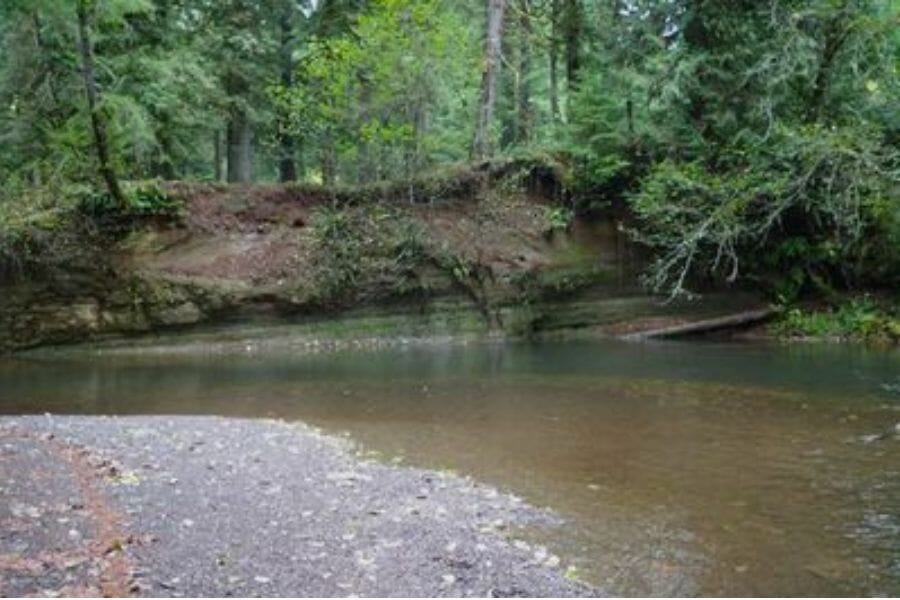
Nestled in the heart of Oregon’s picturesque wilderness lies Clear Creek, an idyllic location renowned for its rich mineral deposits and crystal hunting opportunities. This beautiful creek, which meanders through the lush landscape, offers an abundance of geological marvels waiting to be discovered by those who venture off the beaten path. You can also add this area to your list of places to find gems in Oregon.
The history of Clear Creek dates back to the early days of the Oregon Territory when gold prospectors flocked to the region in search of their fortune. Over time, however, the gold rush dwindled, and the focus shifted to the extraordinary variety of minerals and crystals that adorned the creek’s surroundings. Geologists and crystal enthusiasts have since been drawn to the area, uncovering many striking specimens, including quartz, jasper, and agate.
Clear Creek’s diverse geological formations provide a fertile ground for crystals to develop, making it an ideal destination for those seeking to unearth these magnificent treasures. The area boasts several well-known collecting sites, such as the Whistler Springs and the Clear Creek Mining District, where visitors can find their own crystalline gems.
Where we found crystals at Clear Creek
We have collected various crystals, including agate, carnelian, chalcedony, and jasper, in the gravels and gravel bars of Clear Creek.

The tools every crystal hunter will need
When you're out looking for crystals having the right tools for the job is very important. You don't need a lot for most trips but there are a handful that are critical and will make your life a lot easier.
We get asked a lot about the equipment we use. Over the years we've found a handful of tools that we recommend to both new and experienced crystal miners which we outline in great detail in our complete rockhounding supplies guide. These are quality options that also happen to be relatively inexpensive.
Below are the basic tools that make your life so much easier and save you a ton of time. Check out the full guide to see everything we recommend bringing. One quick note, as an Amazon Associate I earn from qualifying purchases but we try very hard to only recommend gear we would use ourselves and often recommend brands you can't find on Amazon.
At a minimum you should have:
1 - Sturdy rock hammer: The Estwing Rock Pick is our standard
2 - Rugged chisels: Try Kendo' 3-piece Chisel Set
3 - Compact shovel: The Koleiya 28-inch shovel works well
4 - Rock screen pan: The Wazakura Soil Sieve Set fits the bill
5 - Eye protection: DeWalt Safety Glasses are cheap and comfortable
6 - Head protection: Malta's Safety Helmet has been our go-to
7 - Jewelers lens with at least 20x magnification: Jarlink's Jewelers Loop is perfect
The crystal-finding books that we use most
There are also a few books that have been extremely helpful in the search for gems. These books have great recommendations and tips:
National Audubon Society Field Guide to Rocks and Minerals: North America
Northwest Treasure Hunter's Gem & Mineral Guide
Earth Treasures: The Northwestern Quadrant
We provide links to find these tools on Amazon but some can also be found at your local hardware stores. For more recommendations check out the link to our full tool guide above.
Illinois River
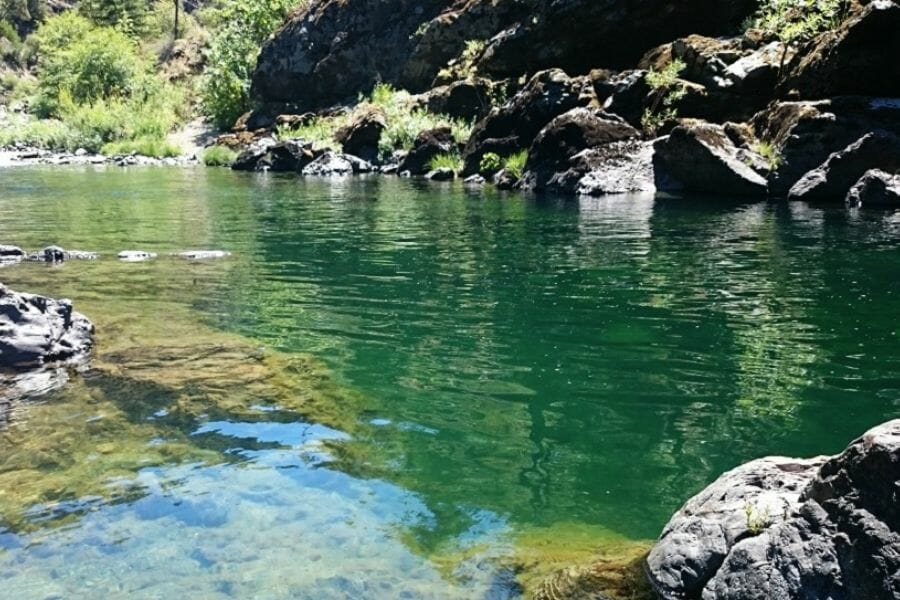
The Illinois River, a captivating waterway that winds through the lush forests of southwestern Oregon, is a haven for crystal enthusiasts and nature lovers alike. Originating in the Klamath Mountains, the river flows through the Rogue River-Siskiyou National Forest, creating a verdant corridor rich in geological wonders and crystalline formations.
The Illinois River is a treasure trove for crystal hunters, thanks to its diverse geology that supports an array of unique minerals and formations. The river’s banks and surrounding areas are known to yield a variety of exquisite crystals, including agates, jaspers, and petrified wood. The river’s tributaries and gravel bars offer prime locations for crystal seekers to sift through deposits in search of these natural masterpieces.
Where we found crystals at the Illinois River
Crystals of azurite, chrysocolla, galena, malachite, and quartz can be discovered at the creeks and east fork of the Illinois River. If you’re wondering how much is crystal worth, we’ve made this guide to help you determine every crystal’s value.
Jackson County
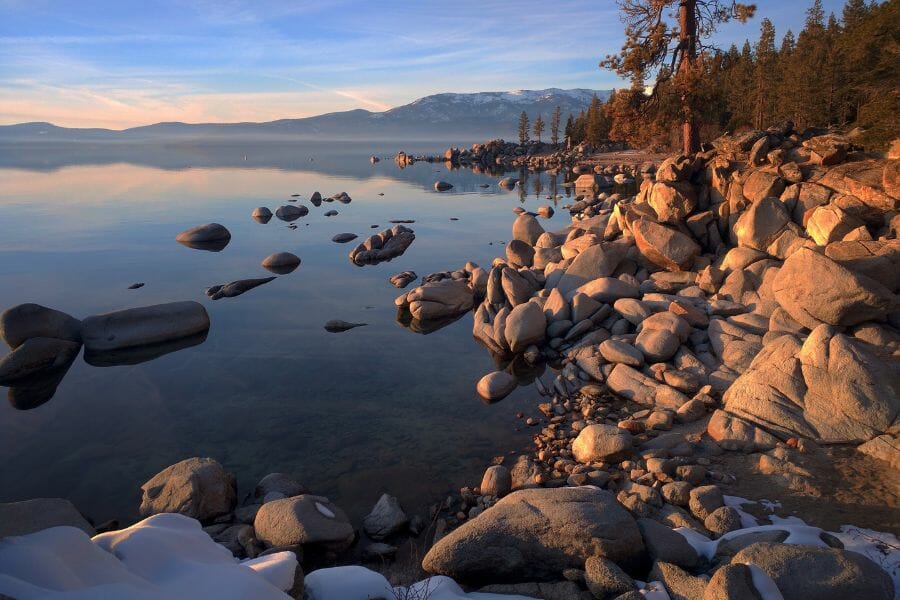
Situated in the picturesque Rogue Valley of southern Oregon, Jackson County is a region steeped in history and abundant in natural wonders. Established in 1852, the county played a crucial role in the development of the Oregon Territory, with gold prospecting, agriculture, and timber production shaping its economic and cultural landscape.
Jackson County’s diverse geology and mineral-rich terrain make it an enticing destination for crystal hunters and collectors. With the Siskiyou and Cascade mountain ranges converging in the region, the county is home to many geological formations that foster the growth of various crystals and gemstones. From opals and agates to jaspers, Jackson County offers enthusiasts an impressive assortment of crystals to uncover.
Where we found crystals at Jackson County
The following are areas where you can discover crystals:
- The Applegate River for jade.
- The Greensprings Mountain is abundant in agate, carnelian, chalcedony, and jasper.
- Ashland’s Columbine and Crackerjack mines contain calcite, chalcopyrite, and pyrite crystals.
- You can find bloodstone crystals in the area stream gravels of Butte Falls.
- There are agate, bloodstone, and quartz crystals in the draws, washes, and slopes of the Big Falls area and Table Rock.
Jump-Off Joe Creek
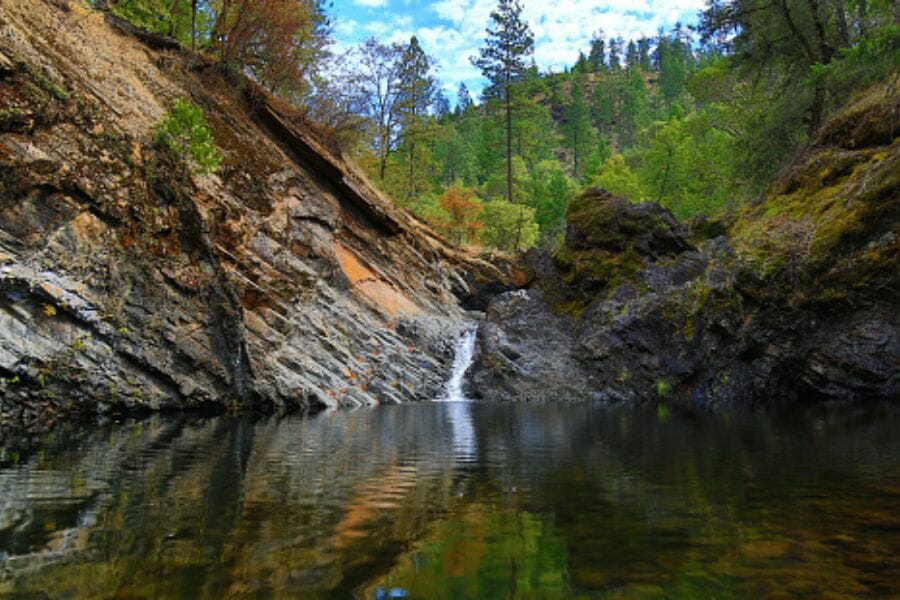
Jump-off Joe Creek, a charming tributary of the Rogue River in southern Oregon, is a hidden gem for those seeking a serene and picturesque setting to hunt for crystals. Originating in the Siskiyou Mountains and meandering through the lush, verdant landscape, this enchanting creek has long captivated explorers and nature enthusiasts alike.
Jump-off Joe Creek is recognized as a prime location for discovering a diverse array of crystals and minerals, thanks to its unique geology and mineral-rich surroundings. The creek’s gravel bars and surrounding areas are known to yield stunning specimens. The gentle flow of the creek continuously uncovers new treasures, making it an ideal spot for both experienced collectors and budding enthusiasts.
Where we found crystals at the Jump-Off Joe Creek
The Jump-Off Joe Creek has various crystals you can find, like azurite, calcite, chalcopyrite, chrysocolla, galena, malachite, and pyrite.
Mount Pisgah Arboretum
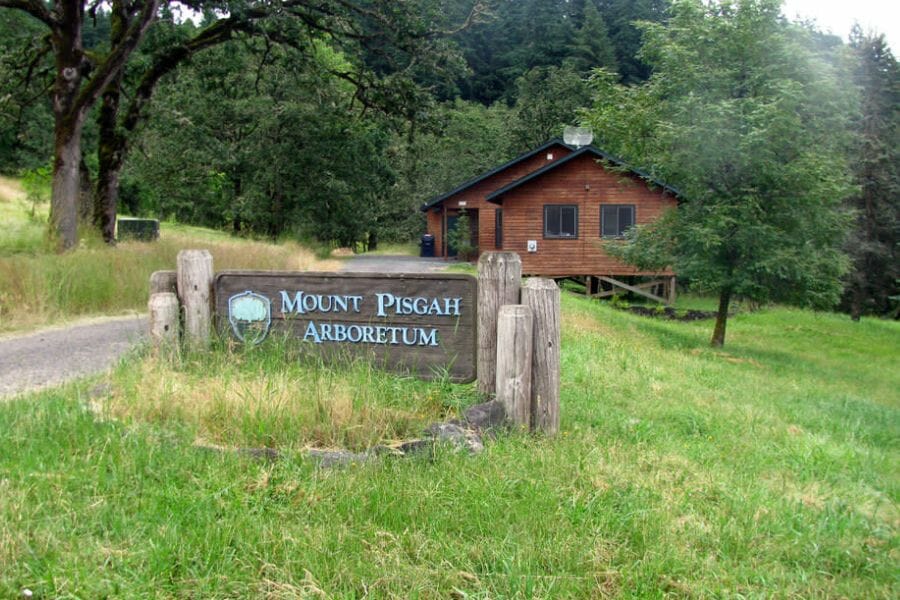
Mount Pisgah Arboretum is a 209-acre living tree museum that showcases the region’s diverse flora and natural beauty. Established in 1973, this tranquil sanctuary aims to inspire appreciation for the botanical richness of the Willamette Valley while promoting environmental conservation and stewardship.
Although Mount Pisgah Arboretum is primarily known for its impressive collection of native plants, its unique geological setting also makes it an intriguing destination for crystal hunters. The area’s volcanic history and rich soils have contributed to forming various minerals and crystalline structures throughout the park.
The arboretum’s network of trails allows visitors to explore the picturesque landscape while seeking hidden geological treasures. The rocky outcrops and riverbanks within the park may reveal beautiful crystals, providing a rewarding experience for those with a keen eye and adventurous spirit!
Where we found crystals at Mount Pisgah Arboretum
At Mount Pisgah Arboretum, we had the most success finding several crystal types, including agate, calcite, jasper, malachite, and quartz crystals.
Our Other Favorite Places For Crystal Hunting
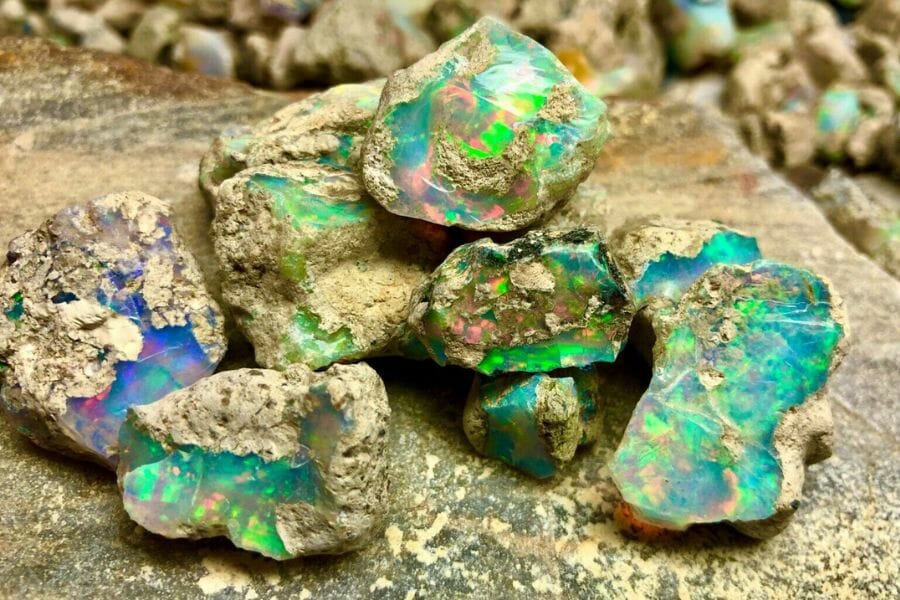
Naturally, the state has many amazing places where you may search for crystals and geodes in Oregon. Below is a list of more possibilities worth considering:
Where you can find crystals for free in Oregon
We’ll discuss a few locations to look for crystals without spending money. Although there are entrance fees for many fantastic sights, other places are still free to visit.
| County | Location |
| Baker | Shirttail Creek area for agate, chalcedony, and jasper |
| Clatsop | Pacific Ocean beaches in gravels as waterworn pebbles for agate, bloodstone, and jasper |
| Clatsop | In low- water stream gravels all the way to the ocean at Pittsburg for agate, carnelian, and jasper |
| Curry | Ocean beaches along entire county for agates and jaspers |
| Curry | At the gravel bars of Rogue River for agate, carnelian, chalcedony, carnelian, and jasper |
| Douglas | In the gravel bars of the SOuth Umpqua River for agate, chalcedony, carnelian, and jasper |
| Harney | Harney Valley for agate, jasper, and quartz |
| Jefferson | Fulton Agate Beds for agate, chalcedony, and opal |
| Jefferson | General area surfaces, draws, and washes of Willowdale for agate, chalcedony, and jasper |
| Josephine | Area gravels and placer mines along Cave Creek, Oregon Creek, and all area surrounding the cavern for agate, chalcedony, jasper, and rhodonite |
| Josephine | Althouse Creek for agate, garnet, jasper, quartz, and serpentine |
| Klamath | Crater Lake National Park and Klamath River gravels for agate, chalcedony, and jasper |
| Lake | All surrounding desert area at Lakeview for agate, jasper, and sunstone |
| Lincoln | Agate beach for agate, chalcedony, jasper, and moonstone |
| Malheur | Willow Creek Reservoir for agate, chalcedony, jasper |
| Malheur | Jorden Creek for agate and jasper |
| Tillamook | Ocean beach gravels fo entire county south of Ocean Lake and Lincoln County for agate, bloodstone, jasper, and moonstone |
Other great places to dig for crystals
If you don’t mind spending money, there are other places to look for crystals. Seasons change the cost of these places, and rare free offerings are possible. Before visiting these places, you must contact them to check.
| County | Location |
| Baker | Regional mines at Copperfield for malachite and pyrite |
| Douglas | The Ball Mine at Cedar Springs Mountain for azurite |
| Douglas | Nickel Mountain area mines at chrysoprase |
| Union | The Orofino Mine for agates and jaspers |
The Best Crystal Shops In Oregon
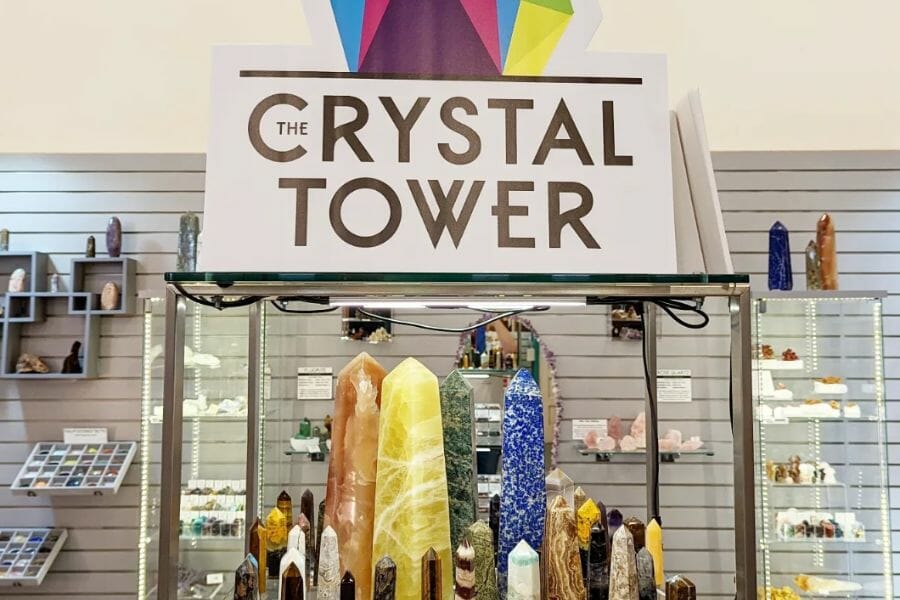
As a result of the state’s wide array of crystals, many of us love making small purchases to round out our collections. These are the best crystal stores we could find if you’re looking for unique and stunning specimens.
- The Crystal Guide – 8145 SE 82nd Ave, Portland, OR 97266
- The Crystal Mirror – 180 SE Mill St, Dallas, OR 97338
- Crystal Power & Light Co – 100 Commercial St NE, Salem, OR 97301
- The Crystal Tower – 12550 SW Main St, Portland, OR 97223
- Flower of Life Crystal Gallery – 40 N Main St, Ashland, OR 97520
- Flux Crystals – 280 W Broadway, Eugene, OR 97401
- The Fossil Cartel – 333 SW Taylor St #150, Portland, OR 97204
- LivingStone Rocks – 1220 SE Grand Ave, Portland, OR 97214
- Nature’s Bling – 133 SW Century Dr Suite 202, Bend, OR 97702
- Styx, Stones, n’ Bones – 160 W 2nd St, Yachats, OR 97498
Additional places to find crystals in nearby states
If you’ve already tried all of our recommendations above or are planning a trip out of the state, you should check out our guides for neighboring states:
If you have any recommendations we haven’t covered please leave them in the comments below!

